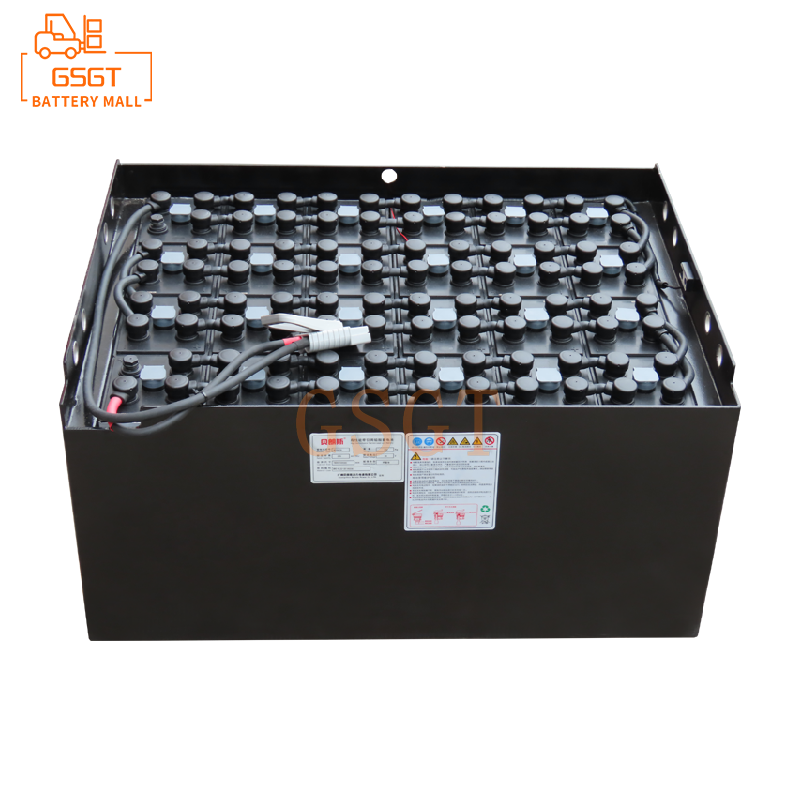Time:2025-07-10 11:21:51
Browse:620
In the field of industrial logistics, forklifts, as core handling equipment, the stability of their power sources directly affects operational efficiency. Lead-acid batteries remain the preferred power source for most forklifts due to their low cost and high safety. However, without scientific full-cycle management, it will not only shorten the service life of the battery but also increase the failure rate of the equipment. This article breaks down the key points of the full-cycle management from charging to discharging of the system, providing enterprises with practical operation and maintenance solutions.
Charging stage: A crucial phase that determines the lifespan of a battery
The "short lifespan" of lead-acid batteries often begins with incorrect charging methods. Most enterprises have misunderstandings such as "charging as needed" and "overcharging", which lead to irreversible damage such as sulfation of the plates and evaporation of the electrolyte. Scientific charging should follow the "three-stage rule" :
During the constant current charging stage, the current should be controlled at 10% to 15% of the battery capacity. At this time, the plates quickly receive the charge, and the voltage gradually rises to 2.4V per cell. When the voltage reaches the threshold, it needs to enter the constant voltage charging stage to maintain a stable voltage (2.3-2.4V per cell). At this time, the current gradually decreases to prevent the plates from overheating. Finally, perform float charging with a small current to replenish approximately 5% to 10% of the remaining power, ensuring that the active substances are fully transformed.
The charging environment also affects the performance. For every 10℃ increase in temperature, the battery life will be shortened by 30%. Therefore, the charging area should be equipped with ventilation devices to keep the ambient temperature at 25±5℃. At the same time, it is necessary to regularly check the compatibility between the charger and the battery. Batteries of different capacities should be equipped with dedicated chargers. Mixing them may lead to undercharging or overcharging.
Discharge stage: The Art of Balancing Efficiency and Protection
Discharge management during forklift operation needs to take into account both operational efficiency and battery protection. The optimal depth of discharge for lead-acid batteries is 50% to 70%. Excessive discharge can lead to sulfation of the plates, while shallow discharge can create a "memory effect", which will reduce the actual capacity in the long term.
At the operational level, it is necessary to avoid continuous operation of forklifts for more than one hour under high-intensity conditions such as fully loaded uphill climbing and frequent start-stop operations. When the dashboard shows that the battery level remains at 20% to 30%, the operation should be stopped promptly. In addition, the low-temperature environment in winter can reduce the battery capacity by 20% to 30%. It is recommended that when operating in an environment below 5℃, the duration of each operation should be appropriately shortened to avoid excessive battery wear and tear.
Daily maintenance: An invisible defense line for extending lifespan
Although the daily inspection and maintenance of storage batteries are simple, they can effectively reduce the failure rate. The electrolyte level should be observed daily to ensure it is 10-15mm higher than the plates. If it is insufficient, distilled water should be added. Every week, the terminal posts should be cleaned with a soft cloth dipped in baking soda solution to remove oxides, and then Vaseline should be applied to prevent corrosion.
Capacity testing should be conducted once every quarter: after fully charging the battery, discharge it at a 10-hour rate and record the discharge time. If the actual capacity is less than 80% of the rated capacity, equalization charging is required. For batteries that have been in use for more than two years, it is recommended to conduct an internal resistance test every six months. When the increase in internal resistance exceeds 50% of the initial value, replacement should be considered.
Frequently Asked Questions
Question: What causes the battery to bulge during charging?
Answer: There are mainly two reasons for bulging during charging: One is that the charger malfunctions, causing overcharging, which leads to an excessively high temperature of the electrolyte and generates a large amount of gas that cannot be discharged in time; The second is the aging of the battery casing, which leads to a decline in its anti-expansion performance. When this situation occurs, charging should be stopped immediately, the charger replaced and the integrity of the battery casing checked. Severely bulging batteries need to be scrapped.
Question: How should the battery be stored when a forklift is idle for a long time?
Answer: Batteries that have been idle for a long time should be fully charged first, then the positive and negative connection wires should be disconnected, and they should be stored in a dry and well-ventilated environment with a temperature maintained between 10 and 30 degrees Celsius. It needs to be recharged once every three months to ensure that the battery level is maintained at 50%-70% to avoid deep discharge which may cause sulfation of the plates.
By scientifically managing the charging and discharging processes and supplemented with meticulous daily maintenance, enterprises can extend the service life of lead-acid batteries in forklifts by more than 30%, while reducing replacement costs by 30% to 40%. This not only enhances the stability of equipment operation, but also provides continuous power support for the efficient operation of industrial logistics.

$1060

$3050

$5710

$1690

MESSAGE
Professional And Efficient
Security
Affordable Price
Professional Services